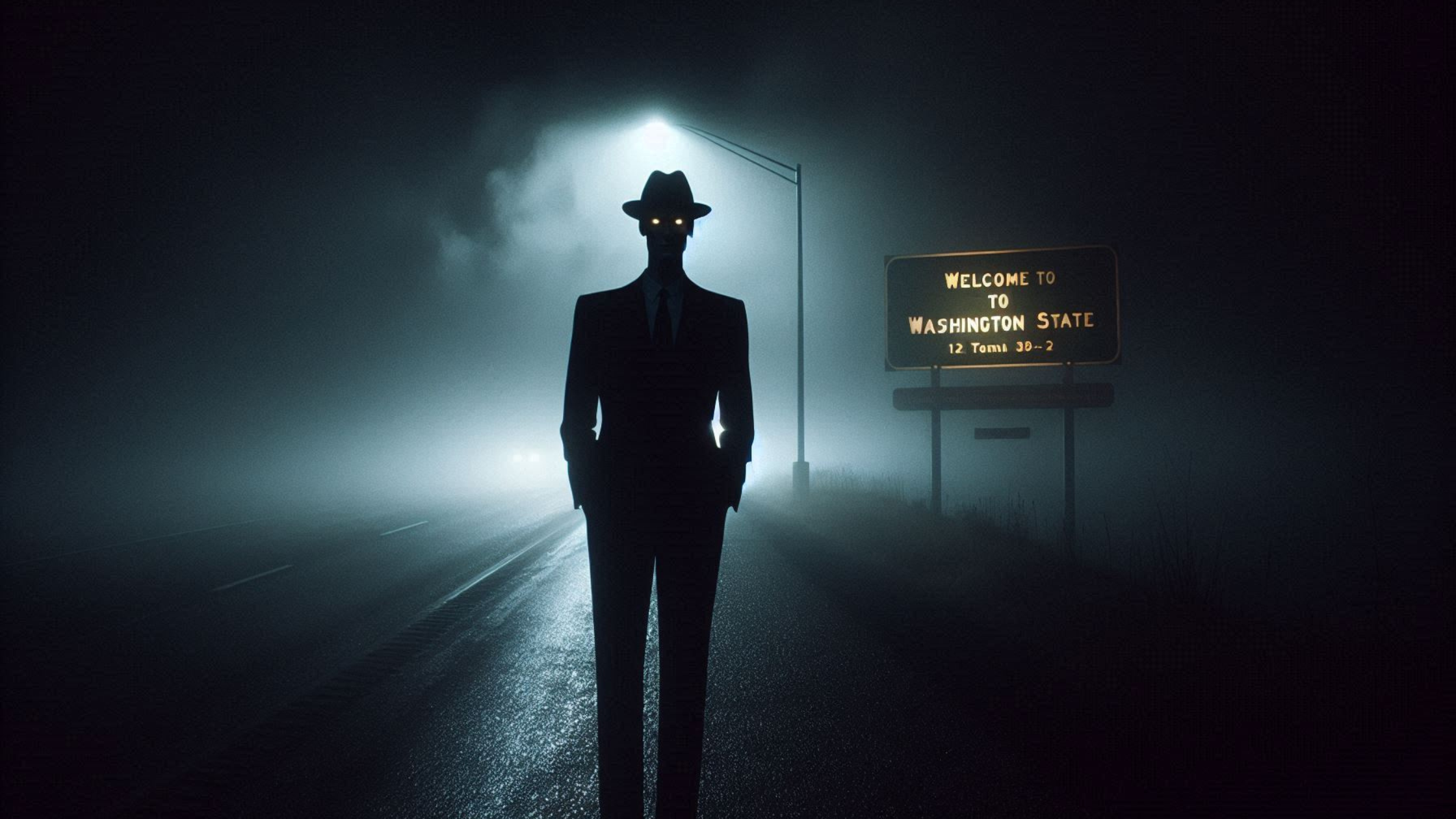Ben Doberman: Separating Fact From Fiction In A Dark Tale
The internet is a vast ocean of information, stories, and legends, and among the most chilling tales to surface in recent years is that of Ben Doberman. This name has become synonymous with a shadowy figure, a supposed serial kidnapper whose alleged exploits have captivated and terrified audiences across social media platforms. But is there any truth to the spine-tingling narrative, or is Ben Doberman merely a modern-day boogeyman, a figment of our collective imagination brought to life by the viral nature of digital storytelling?
Join us as we delve into the dark world surrounding Ben Doberman, exploring the origins of this urban legend, the claims made about his alleged crimes, and most importantly, distinguishing between the chilling narrative and the verifiable facts. This article aims to shed light on why such stories captivate us, what they reveal about our fears, and the crucial importance of media literacy in an age where fiction can often masquerade as reality.
Table of Contents
- Unveiling the Enigma of Ben Doberman
- The Genesis of a Modern Myth: Where Did Ben Doberman Come From?
- Ben Doberman's Alleged Reign of Terror: What the Stories Claim
- Separating Fact from Fiction: Is Ben Doberman Real?
- The Psychological Underpinnings: Why Do These Stories Captivate Us?
- Real-Life Parallels: Understanding the Inspiration Behind the Fiction
- The Broader Impact: How Urban Legends Shape Our Perceptions
- Conclusion: The Enduring Legacy of Ben Doberman
Unveiling the Enigma of Ben Doberman
The name Ben Doberman conjures images of a mysterious, elusive figure, a towering terror lurking in the shadows. Stories describe him as a serial kidnapper, a mastermind of deceit, and a criminal who seemed to vanish without a trace. The legend claims that Ben Doberman supposedly kidnapped and disappeared over 50 people in Washington State for decades, targeting travelers for over 30 years. This chilling narrative, often accompanied by psychological twists and a haunting portrayal of a mind consumed by dark impulses, has captivated readers and viewers alike.
- Hdhub4udo
- Vegamoviesmen
- Mms Instagram Viral
- Lamar Chairez Onlyfans Leak
- Mkvmoviespoint All Quality And Hindi Dubbed Download
The sheer scale of the alleged crimes attributed to Ben Doberman—over 50 victims, decades of activity, and a supposed prison escape in 2009—paints a picture of a truly terrifying individual. It's a story designed to send shivers down your spine, reflecting our deepest fears and fascinations with the macabre and the unknown. But before we allow ourselves to be fully immersed in the terrifying tale, it's crucial to examine the foundation upon which this legend is built.
The Genesis of a Modern Myth: Where Did Ben Doberman Come From?
Unlike historical figures or documented criminals, the story of Ben Doberman doesn't originate from police reports, news archives, or official biographies. Instead, its primary breeding ground is the internet, particularly social media platforms like TikTok, YouTube, and Meta. If you try to Google search Ben Doberman, you'll quickly notice he doesn’t even have a Wikipedia page. What shows up instead are mostly YouTube, Meta, and TikTok videos, leading many to rightly call "bs" on the claims of his existence as a real person.
This digital origin is key to understanding the phenomenon of Ben Doberman. It's a testament to the power of online storytelling and the rapid dissemination of information—or misinformation—in the modern age. The story circulates principally on TikTok and other platforms, where short, gripping videos tagged with #fyp, #creepy, #nightmare, #storytime, and #washington can quickly go viral, reaching millions of users.
TikTok and the Digital Spreading of Fear
TikTok, with its short-form video format and powerful algorithm, is an ideal platform for the spread of urban legends. A video from "terrortactics" (@terrortactics) tagged with "#crimestories #case #slenderman #bendoberman #creepy #storytime #storytelling #history #washington #unitedstates #america #scary #horror #foryou #fyp #viral" perfectly illustrates how these narratives gain traction. Users are drawn in by the promise of a "creepy" or "scary" story, often presented in a dramatic or suspenseful manner. The brevity of the videos encourages quick consumption and sharing, creating a snowball effect where the story gains more visibility and perceived credibility with each share.
The use of hashtags like #fyp (For You Page) ensures that these videos are pushed to a wide audience, even those not actively searching for horror content. This organic spread, combined with the human fascination with the macabre, allows the story of Ben Doberman to permeate popular culture without needing any factual basis. It's a modern campfire tale, but instead of a flickering flame, it's illuminated by the glow of smartphone screens.
The Allure of Creepypasta and Urban Legends
The narrative of Ben Doberman fits squarely within the genre of "creepypasta"—horror-related legends or images that have been copied and pasted around the Internet. These stories are designed to be unsettling, often featuring mysterious entities, unexplained phenomena, or gruesome events. The effectiveness of creepypasta lies in its ability to blur the lines between reality and fiction, tapping into our primal fears.
A prime example of creepypasta's real-world impact is the Slenderman phenomenon. "Beware the Slenderman" discusses the incident in which two girls attempted to murder one of their friends in an attempt to appease Slenderman, a fictional monster who originated from an internet phenomenon called creepypasta. This tragic event serves as a stark reminder of how deeply fictional narratives, especially those presented as potentially real, can affect vulnerable individuals. While the story of Ben Doberman has not been linked to such real-world violence, it highlights the power and potential influence of these online tales. Ben Doberman is explicitly described as a fictional serial killer whose story is based on urban legends and internet storytelling, portrayed as a mysterious and elusive figure.
Ben Doberman's Alleged Reign of Terror: What the Stories Claim
The core of the Ben Doberman legend revolves around a terrifying set of alleged crimes. The narrative paints him as a prolific and cunning criminal, responsible for a shocking number of disappearances.
According to the urban legend, Ben Doberman is a mythical figure who supposedly kidnapped and disappeared over 50 people in Washington State for decades. He is portrayed as targeting travelers for over 30 years, an elusive figure who operated with impunity. The stories emphasize his mastery of deceit and his ability to seemingly vanish without a trace, making him an almost supernatural antagonist.
The Vanishing Act: Prison Escape and Unsolved Mysteries
One of the most compelling, and chilling, aspects of the Ben Doberman narrative is the claim of his supposed escape. The legend states that he allegedly vanished from prison in 2009. This detail adds another layer of terror to the story, implying that even after capture, this "mastermind" could not be contained, and might still be out there. The idea of a dangerous criminal escaping justice and remaining at large feeds into a fundamental societal fear: the inability of authorities to protect us from malevolent forces. This specific detail, however, is a strong indicator of the story's fictional nature, as a high-profile prison escape of a serial kidnapper responsible for over 50 victims would undoubtedly be a matter of public record and widespread news coverage.
Washington State: The Epicenter of the Legend
The legend frequently places Ben Doberman's alleged activities in Washington State. This geographical specificity lends a touch of realism to the otherwise fantastical claims. By anchoring the story to a real location, it becomes easier for listeners to imagine the events unfolding in their own backyard, enhancing the creepiness factor. The video about Ben Doberman, a mysterious figure who allegedly abducted 52 people in Washington State, is tagged with #washington, further solidifying this connection in the minds of viewers. This choice of location might be arbitrary, or it could be a subtle nod to the state's natural wilderness and isolated areas, which can easily be imagined as settings for dark deeds.
Separating Fact from Fiction: Is Ben Doberman Real?
Despite the compelling narrative and the widespread circulation of the story online, it is crucial to state unequivocally: **Ben Doberman is a fictional serial killer whose story is based on urban legends and internet storytelling.** There is no evidence to suggest that he is real. This is the most critical takeaway for anyone encountering the tale of Ben Doberman.
As noted in the provided data, a simple Google search reveals the absence of any official records, news articles from reputable sources, or law enforcement reports confirming the existence of a serial kidnapper named Ben Doberman who operated for decades, kidnapped 50+ people, or escaped prison in 2009. The only "evidence" of his existence comes from YouTube, Meta, and TikTok videos, which are platforms for user-generated content, not verified news or criminal databases. The lack of a Wikipedia page, which typically aggregates information on notable individuals (including criminals), is a strong indicator that Ben Doberman is not a real person.
The story of Ben Doberman blends truth and fiction in a way that captivates us, but it is important to understand that the "truth" here refers to the psychological truths it reveals about our fears and imagination, not historical or factual accuracy. While the narrative is chilling and well-crafted, it remains a product of internet folklore.
It is important to exercise critical thinking when consuming information online, especially when it pertains to disturbing or sensational claims. The absence of verifiable sources, official documentation, or mainstream media coverage for a figure of such alleged notoriety should immediately raise red flags.
The Psychological Underpinnings: Why Do These Stories Captivate Us?
If Ben Doberman isn't real, why does his story resonate so strongly with people? The fascination with the macabre and the unknown is deeply ingrained in human psychology. Stories like that of Ben Doberman serve several psychological functions:
- **Catharsis and Fear Management:** Engaging with fictional horror allows us to experience fear in a controlled environment. It's a safe way to confront our anxieties about crime, danger, and the unknown, without facing real-world consequences.
- **The Appeal of the "Unsolved":** The idea of a criminal who vanishes without a trace, or whose motives are shrouded in mystery, is inherently intriguing. It taps into our desire to understand the inexplicable and provides a canvas for our imaginations to fill in the blanks.
- **Moral Lessons (Implicit):** Urban legends often contain implicit warnings. The story of Ben Doberman, targeting travelers, might subconsciously reinforce caution about strangers or isolated areas, even if the specific narrative is fictional.
- **Community and Shared Experience:** Sharing scary stories, whether around a campfire or on TikTok, creates a sense of shared experience and community. It's a way for people to bond over common interests and emotional responses.
- **The Power of Narrative:** Humans are natural storytellers. A well-crafted narrative, even if entirely fictional, can be incredibly compelling. Ben Doberman’s fictional serial killer story has captivated readers with its chilling narrative, psychological twists, and haunting portrayal of a mind consumed by dark desires.
These stories also reflect our collective fears about societal breakdown, the vulnerability of individuals, and the existence of pure evil. The mythical figure of Ben Doberman becomes a vessel for these anxieties, allowing us to explore them through a fictional lens.
Real-Life Parallels: Understanding the Inspiration Behind the Fiction
While Ben Doberman is fictional, the elements of his story often draw from real-life horrors, which can contribute to the legend's perceived authenticity. Understanding these parallels helps us differentiate between fact and fiction more clearly.
- **Serial Killers and Disappearances:** The concept of a serial kidnapper and murderer is, unfortunately, a very real one. The notorious case of Robert Ben Rhoades (born November 22, 1945), also known as the "Truck Stop Killer," provides a chilling real-world parallel. He is a confirmed serial killer and rapist, known to have tortured and killed at least two couples in Illinois and Texas in 1989 and 1990. Disturbingly, he is additionally suspected of torturing, raping, and killing more than fifty women between 1975 and 1990, based on data about his truck routes and women who went missing. This real-life monster, who targeted travelers and left a trail of disappearances, mirrors some of the terrifying aspects attributed to Ben Doberman, demonstrating how real crimes can inspire fictional narratives.
- **Family Tragedies and Violence:** While unrelated to kidnapping, the mention of "Chad Doerman shot and killed his three sons and wounded his wife in Ohio in June 2023" in the provided data highlights the real and devastating impact of violence within families. He pleaded guilty to aggravated murder and was sentenced to life imprisonment without parole. Such real-world atrocities, though distinct from the Ben Doberman legend, underscore the pervasive presence of human cruelty and the profound impact it has, contributing to a societal fascination with dark criminal minds, whether real or imagined.
- **Internet-Spawned Entities:** As discussed earlier, the Slenderman phenomenon is a direct parallel to how fictional entities can emerge and gain notoriety through internet storytelling. The tragic incident linked to Slenderman serves as a cautionary tale about the blurred lines between online fiction and real-world perception.
It's important to stress that while these real cases share thematic elements with the Ben Doberman story (e.g., serial violence, disappearances, targeting travelers), they are distinct and verifiable events. The Ben Doberman narrative is a composite, drawing on common tropes of horror and true crime to create a compelling, albeit fabricated, tale.
The Broader Impact: How Urban Legends Shape Our Perceptions
The enduring popularity of stories like Ben Doberman reveals much about our society. They reflect our fears of the unknown, our anxieties about safety, and our fascination with the darker aspects of human nature. These urban legends, even when fictional, can influence our perceptions of the world around us.
They can contribute to a general sense of unease or heighten existing fears about crime, particularly in specific locations like Washington State, where the Ben Doberman legend is set. While this can sometimes lead to increased caution, it's vital that such caution is based on factual information rather than unfounded fears.
Furthermore, the rapid spread of these stories through social media highlights the challenges of distinguishing between reliable information and fabricated content in the digital age. It underscores the importance of media literacy – the ability to critically evaluate information, identify credible sources, and understand the intent behind various narratives.
The story of Ben Doberman, while not a real person, has become a name synonymous with a certain type of internet horror, a testament to the power of collective imagination and digital dissemination. It shows how a simple idea can evolve into a complex, captivating narrative that resonates with millions.
Conclusion: The Enduring Legacy of Ben Doberman
The urban legend of Ben Doberman is a fascinating case study in modern folklore. It's a chilling narrative of a supposed serial kidnapper, a mastermind of deceit who allegedly vanished from prison, leaving behind a trail of over 50 disappeared people in Washington State. Yet, as we've thoroughly explored, Ben Doberman is a mythical figure, a fictional serial killer born from internet storytelling and urban legends. There is no verifiable evidence of his existence, and official records remain silent on such a notorious criminal.
The story of Ben Doberman captivates us not because of its factual accuracy, but because it blends truth and fiction in a way that taps into our deepest fears and fascinations with the macabre and the unknown. It reflects our anxieties about safety, the vulnerability of individuals, and the enduring human interest in dark psychological narratives. While Ben Doberman is not real, the elements of his story draw from very real fears and, unfortunately, real-life criminal acts, such as those committed by Robert Ben Rhoades.
Ultimately, the tale of Ben Doberman serves as a powerful reminder of the pervasive nature of urban legends in the digital age and the critical importance of distinguishing between compelling fiction and verifiable fact. It's a testament to the human imagination's capacity to create terrifying figures and the internet's ability to spread them like wildfire.
What are your thoughts on urban legends like Ben Doberman? Do you find them genuinely terrifying, or are you more fascinated by their psychological impact? Share your insights in the comments below, and if you found this exploration insightful, please consider sharing this article with others who are intrigued by the mysteries of internet folklore.

Ben – Doberman (Reserved) Call +44 7930 408458 For Available Dogs

Ben – Doberman (Reserved) Call +44 7930 408458 For Available Dogs

Ben Doberman: The Haunting Tale of Psychological Terror in Washington